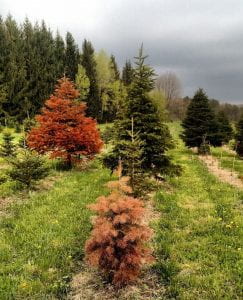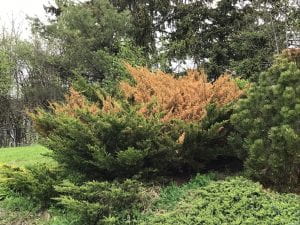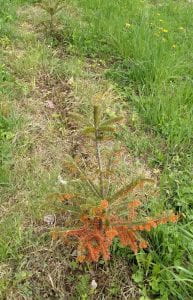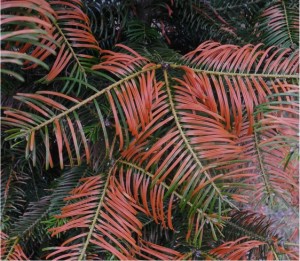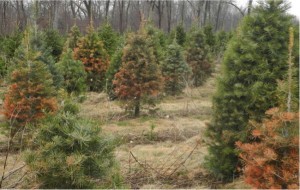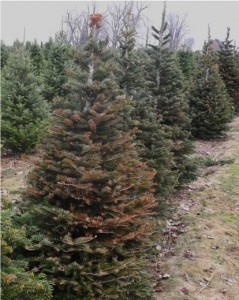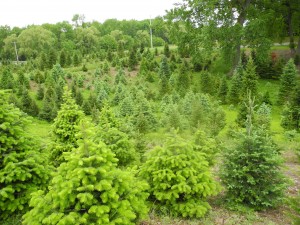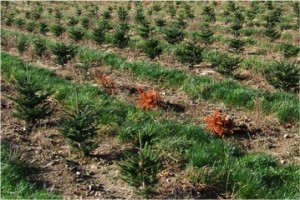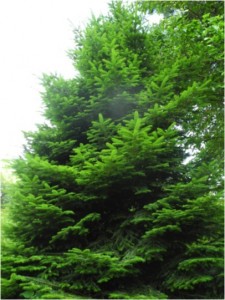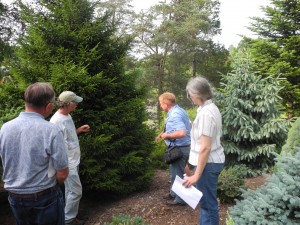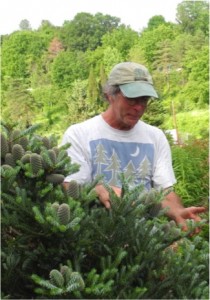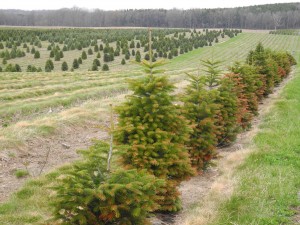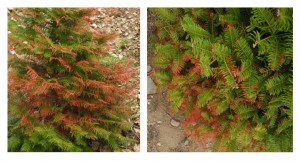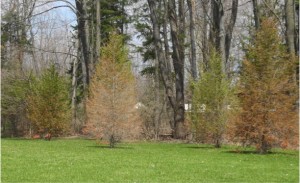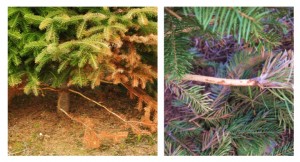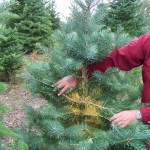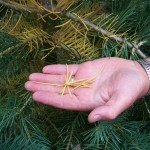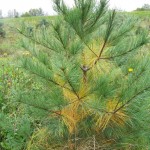2012 Brought Weather Extremes in the Spring

Lilac in full bloom weighed down by snow – April 2012
Coming off a record mild winter, we had temps in Upstate NY that reached 80 F in mid-March, the mid- to upper 80’s F in mid-April and then a low in the mid-20’s at the end of April. May was drier than normal for most in upstate NY and in some areas we were about inch or more below the normal rainfall in May.
What does all this mean for growing trees?
Frost and freeze damage was common especially in the low lying areas of fields. This year it was about early warmth rather than late frosts.

Concolor fir – terminal bud killed from low temps

Spruce- bud, center, killed from low temps
It seems that there are enough surviving buds on trees in many locations, so trees will able to compensate for the lost growing points and little differences will be noted when pruning this summer.

Turkish fir – buds killed due to low temps
For those managing certain pests like White Pine Weevil, which must be controlled early in the spring, growers needed to be ready extra early and it was very short window of opportunity to get treatments in place.

If possible, this year’s new transplants could benefit from irrigation
The drier weather, during needle expansion, may make it easier to stay on top of the fungal needlecast diseases of Douglas fir. But the lack of normal rainfall is also stressing the transplants that were set into the fields earlier this spring.

